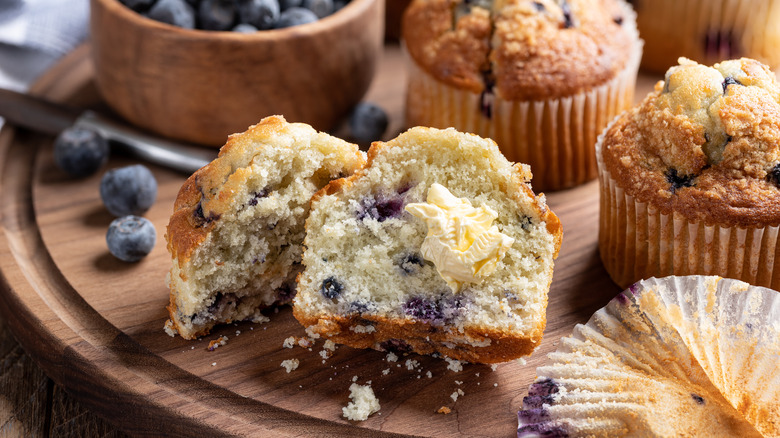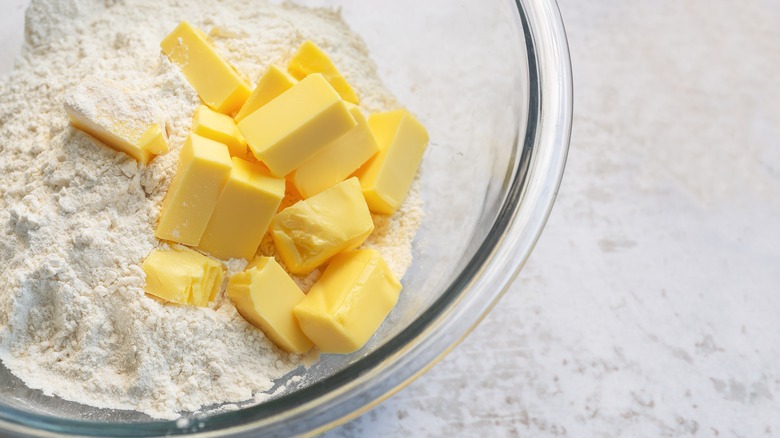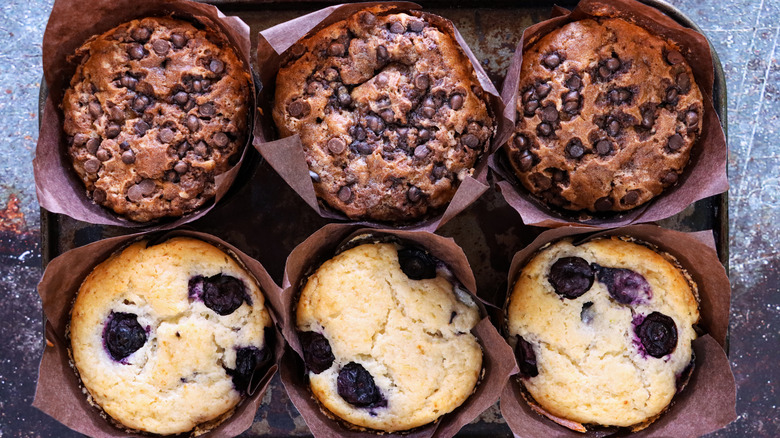The Butter Mistake That Immediately Ruins Muffins
While it's easy to enjoy a batch of muffins fresh out of the oven, the process of baking them is usually a much more tedious experience. Even a small miscalculation in measurements can destroy an entire batch of these fluffy marvels, so these endeavors really do take some genuine practice and patience. For those new to baking, don't underestimate the hidden difficulty of these recipes, because even something as simple as using cold butter instead of room-temperature can immediately ruin your muffins.
Fats like butter bring flavor to baked goods, but they are also an integral part of creating their fluffy structures. Butter helps muffins rise and stay intact, making this ingredient one of the most important additions of all. While most every baked good has butter in its ingredients list, whether it has to be melted, room temperature, or cold is a really important distinction to take note of. That's because butter has varying effects depending on its temperature, and using cold butter for muffins will make the end product way too doughy and dense.
Room temperature butter keeps muffins light and airy
Butter has so many different uses in baking, and you can change its effects by altering its temperature. Whether you want flakiness or airiness, a stick of butter can provide; you just have to heat it up or stick it in the fridge. For example, if you add cold butter into your batter of choice in cubes, it will melt as it bakes in the oven and create little airy pockets in your baked goods. That's why cold butter is a perfect choice for pastries, scones, or pie crusts — it makes layers in the structure of the dough, and creates a flaky texture.
Alternatively, if you cream room-temperature butter with sugar and add it to a batter, the sugar crystals will create little paths in the butter with their sharp edges. This makes your baked project extra fluffy and light as air floods into those open spaces. This is typically what muffin recipes call for, as that buoyant, tender end result is exactly what you want. To help your butter reach room temperature, simply leave it out on your kitchen counter for at least an hour before baking, and you'll be ready to bake.
Other things to keep in mind when baking muffins
If it's not creamed butter that a batch of muffins calls for, other recipes might use simple cooking oil instead. Liquids like these will easily integrate into a muffin batter, making for an extra cohesive batch. Melted butter has a tendency to re-solidify after baking, which makes for dense muffins instead of light and fluffy, so some people prefer to use oil for this reason, just in case. Plus, many neutral cooking oils are mild in flavor and won't disrupt the taste of your muffins either. So, if you are making a batch of muffins where the butter flavor might not be desirable, this could be the best butter substitute for pillowy soft baked goods. The choice just depends on your needs.
Finally, one of the other simple mistakes that could be ruining your food, making for overly-dense muffins, is over-mixing your batter. Much like accidentally using cold butter, over-mixing makes your muffins too cake-like as you strip the batter of all those air pockets that help the batch stay light and fluffy. To keep your muffins airy, mix your ingredients until just combined and stop. This is one of the most common baking mistakes, so keep this in mind. Then, if all goes as planned, your muffins should come out perfect.


